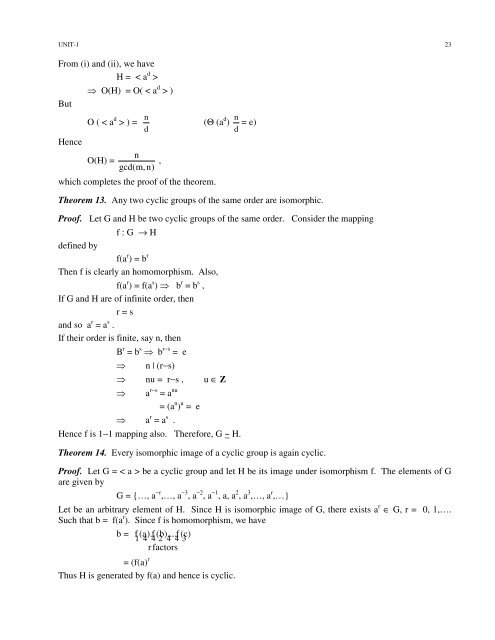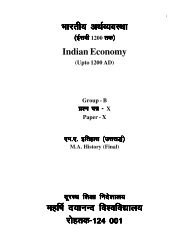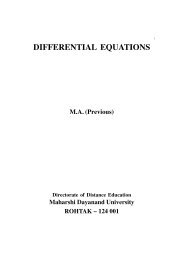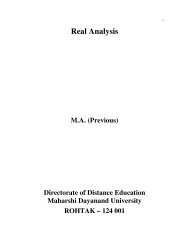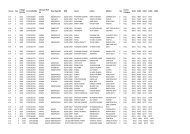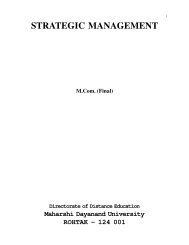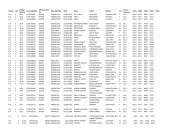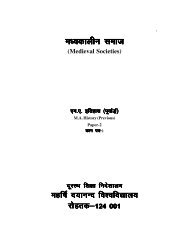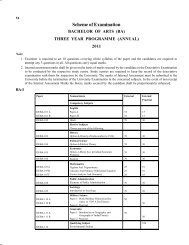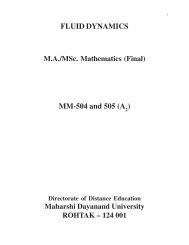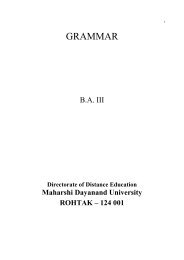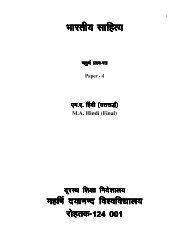Advanced Abstract Algebra - Maharshi Dayanand University, Rohtak
Advanced Abstract Algebra - Maharshi Dayanand University, Rohtak
Advanced Abstract Algebra - Maharshi Dayanand University, Rohtak
Create successful ePaper yourself
Turn your PDF publications into a flip-book with our unique Google optimized e-Paper software.
UNIT-1 23<br />
From (i) and (ii), we have<br />
H = < a d ><br />
But<br />
O(H) = O( < a d > )<br />
O ( < a d > ) = d<br />
n<br />
(Θ (a d ) d<br />
n = e)<br />
Hence<br />
O(H) =<br />
n<br />
gcd(m,n)<br />
which completes the proof of the theorem.<br />
,<br />
Theorem 13. Any two cyclic groups of the same order are isomorphic.<br />
Proof. Let G and H be two cyclic groups of the same order. Consider the mapping<br />
f : G → H<br />
defined by<br />
f(a r ) = b r<br />
Then f is clearly an homomorphism. Also,<br />
f(a r ) = f(a s ) b r = b s ,<br />
If G and H are of infinite order, then<br />
r = s<br />
and so a r = a s .<br />
If their order is finite, say n, then<br />
B r = b s b r−s = e<br />
<br />
n | (r−s)<br />
nu = r−s , u ∈ Z<br />
<br />
a r−s = a nu<br />
a r = a s .<br />
= (a n ) u = e<br />
Hence f is 1−1 mapping also. Therefore, G ~ H.<br />
Theorem 14. Every isomorphic image of a cyclic group is again cyclic.<br />
Proof. Let G = < a > be a cyclic group and let H be its image under isomorphism f. The elements of G<br />
are given by<br />
G = {…, a −r ,…, a −3 , a −2 , a −1 , a, a 2 , a 3 ,…, a r ,…}<br />
Let be an arbitrary element of H. Since H is isomorphic image of G, there exists a r ∈ G, r = 0, 1,….<br />
Such that b = f(a r ). Since f is homomorphism, we have<br />
b =<br />
f (a).f (b)....f (c)<br />
1 4 4 2 4 4 3<br />
r factors<br />
= (f(a) r<br />
Thus H is generated by f(a) and hence is cyclic.


